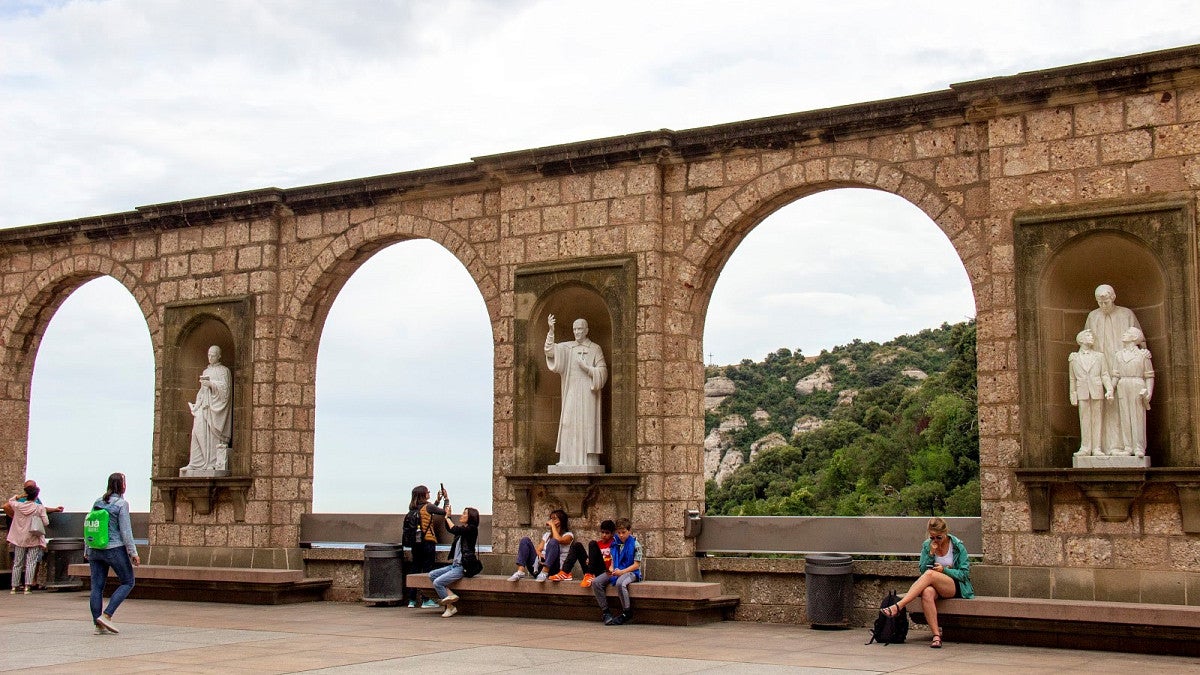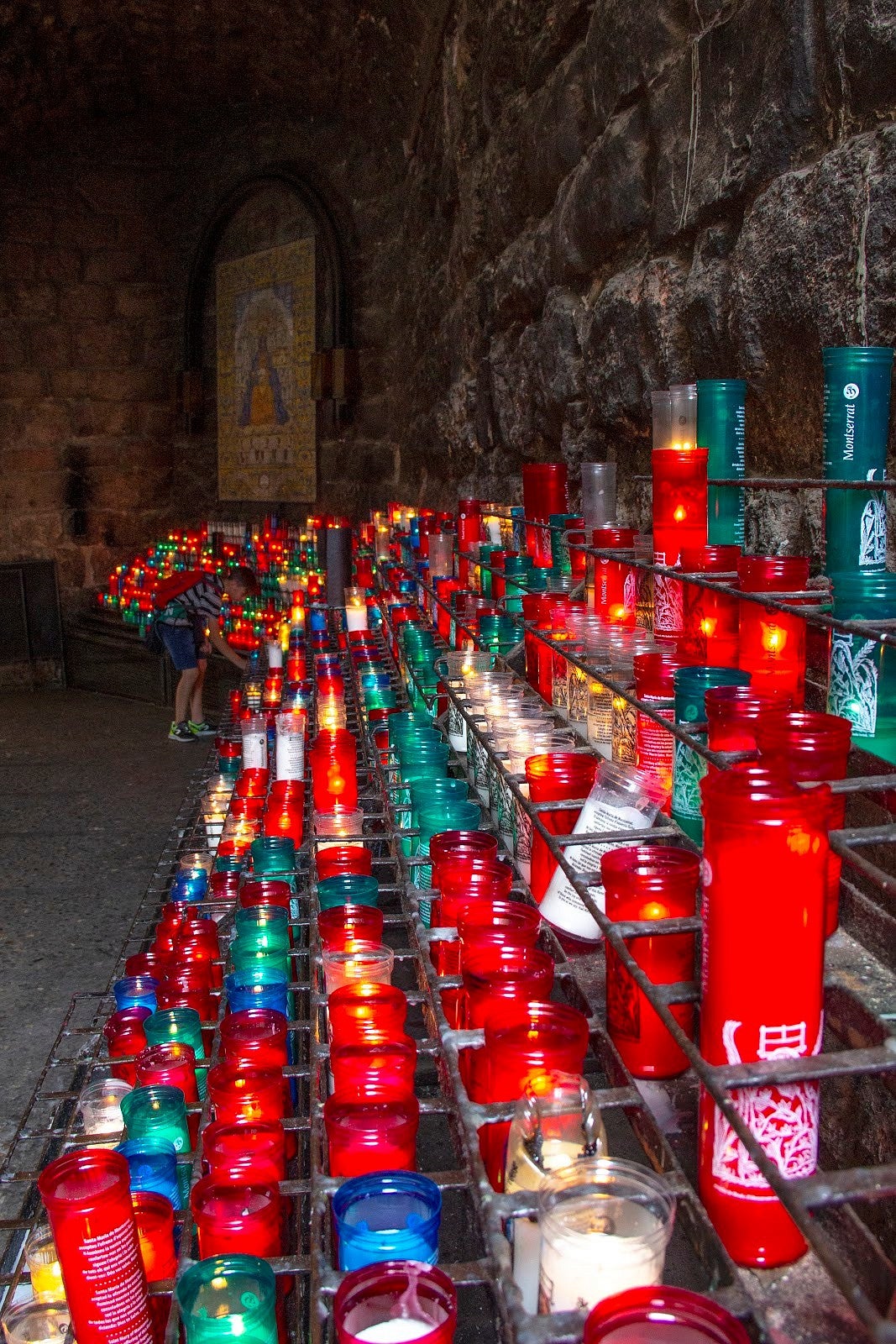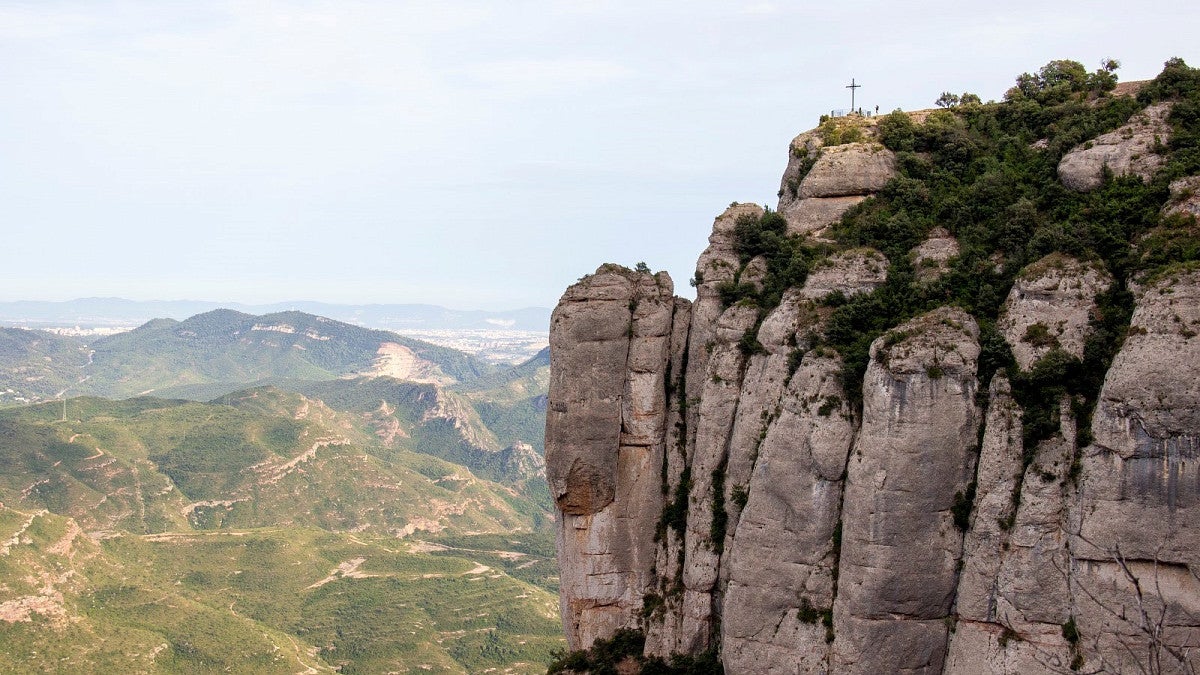By Abbey McDonald from Prague
October, 2019
We had been hiking for three hours, and I had finished all of the water. What was once a fun, scenic trek with the occasional climb over a boulder had turned into an endless staircase through the forest. I hauled one foot in front of the other, vision blurry as oxygen escaped my brain. A humble wooden sign to my right mercifully read 30 minutes to the top. It took an hour.
Finally, when the trees parted and the 11th century Spanish monastery emerged, my brother and I whooped with new life. We doubled our pace, but stopped at a captivating statue of a monk made of weathered stone. He overlooked a steep valley with bright yellow gondolas creeping their way up to buildings that floated on air. There, we were explorers.

If my upcoming semester abroad felt anything like this, I thought, I would be too ecstatic to be homesick. My brother and I were overseas for the first time, travelling for two weeks in September before my term abroad in Prague. Besides being the time of our lives, it served as a rapid-fire test of my ability to adjust to language barriers, budgeting, public transportation, and schedule mishaps before my brother would leave me alone in a foreign country. It was exhausting, so after a week of congested cities we added fresh air to the agenda.
I was proud that we skipped the gondola and took the hard way up, and was looking forward to walking into Montserrat, built at the top of a mountain in Catalonia, outside Barcelona. I pictured empty streets and serene halls where our careful footsteps would echo dramatically. Perhaps we would see one of 70 resident monks, head bowed in prayer.
When we crested the last hill, the first thing I saw was the buffet. I was taken aback by the sight of hot dogs, pizzas and gelato, and the smell of smoked meat turned my stomach. Then I saw the cars, the tram, and the tour busses. After half a day of solitude, it felt like a circus. But hey, free Wi-Fi.
Out of breath and stunned, we ventured inside to buy two liters of water and some gelato. We sat on a bench outside, overlooking a staggering view of the valley as tourists bustled behind us. I facetimed my mom, deciding to take advantage of my first solid internet connection in a week.
“How was the hike?” She asked, in a whisper. She was in line at the DMV in Gresham, Oregon. The juxtaposition added to my stupor.
“We literally just finished it. This is the hike. There was gelato at the top,” I said, gesturing around me with a tiny yellow plastic spoon.
“Oh, that’s fun!” She replied. Before we said goodbye, I flipped my camera around to show her the view.
I wasn’t sure about how fun it was. Sure, I was near the point of passing out and was lucky to find refreshments, but I had been hoping our pilgrimage would feel monumental. I was bitter, too; I was surrounded by people who took a 25-minute air-conditioned ride up the mountain and were getting the same view as me without the effort. The Abbey was founded 1000 years before the automobile and walking into another overcrowded touristy area yanked me out of the last millennium.
Throughout our trip, my brother and I had tried to plan our experiences as authentically as possible: just looking at reviews, routes and descriptions without visuals which would spoil the adventure. We didn’t know there was a road, let alone one big enough for tour busses packed with screaming kids and selfie-sticks.

“I think it was better at the monk statue, before we knew about all this stuff,” my brother said, reading my mind as he scraped the bottom of his chocolate gelato. I agreed.
In truth, I felt sick with disappointment.
Still, we wandered around and took in the architecture. Crowds or not, the surrounding valley towering above the terraces and statues had a surreal effect.
Through a stone archway, past an out-of-place contemporary wire sculpture of a head, a hallway glowed like a hearth. A wall of heat greeted me, and water trickled somewhere nearby, the only sound as all visitors fell silent. Along the wall, there were hundreds of prayer candles in red, green and blue containers. Solemn worshipers slid donations into nearby boxes to light their own.

To them, and to a lot of visitors, the monastery was more than a nice view. People from all around the world come there to touch the Black Madonna of Montserrat, a wooden sculpture darkened with time and smoke which some believe to be as old as Christianity itself.
I realized then that I had felt wrongly entitled to this place of worship because I had broken a sweat getting there. Even if people weren’t there for worship, who was I to wish for a gondola-sized visitor limit when I didn’t even know the place existed until a few weeks before? Who was I to scorn the genius business decision of being the only hot-dog vendor on the top of a mountain?
I couldn’t feel my legs anyway, so I suggested we do one last trek. On the opposite side of the valley, on an even higher peak, stood a cross. Very few visitors bothered with it.

We made our way there, passing a nun enjoying her lunch break with a book surrounded by several mossy statues. It was another 30 minutes of hiking added onto a tiresome day, but at much more manageable incline. When we got to the peak, I started to cry. We could see every town for miles, and the setting sun made the river far below golden. Monserrat looked like dollhouse, with toy cars and toy people. It was all perfect.
So, at the top of Monserrat I learned to get over myself, and that I’m not immune to being a tourist. It was the first time abroad that I had to confront the fact that I’m not as open minded as I think I am.
I’m still going to go the extra mile, though, because the view is always worth it. Next time, I’ll pack more water.

Abbey McDonald is a staff writer at the CHC, and currently an exchange student at Charles University in the Czech Republic.
